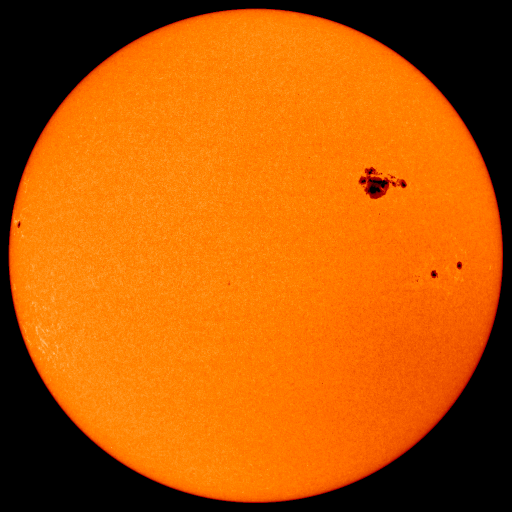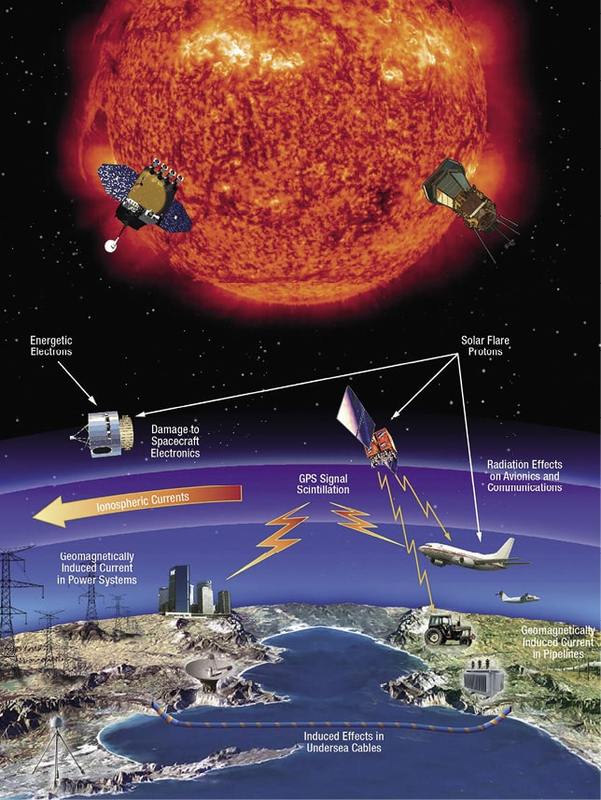

You can zoom in on this plot by selecting a time period that you wish to view and even export the graph as a JPG PDF SVG or PNG file. You may be able to observe the first part of the eclipse as the Moon just starts to darken but the Moon will be near or on the horizon as Earths shadow. NASA captures the moment a sunspot explodes When you subscribe we will use the information you provide to send you these newsletters. An alert published by the US National Oceanic and Atmospheric Administrations. During Solar Minimum the suns magnetic field weakens allowing more cosmic rays into the solar system. SOLAR flares are one of the biggest threats facing our planet today according to theoretical physicist Michio Kaku who fears we are sitting. Snow could hit in just 3 weeks as White Halloween brings worst storm in 13 YEARS as polar vortex collapses. On Tuesday a sunspot known as AR2859 exploded in a spectacular display. Sometimes theyll include recommendations for other related newsletters or services we offer. According to NASA solar flares are intense bursts of radiation that come from the release. He added that the estimated time of impact was between 6am and 6pm today. The Sun emitted a significant solar flare peaking at 1029 am. CMEs are huge bubbles of radiation and particles from the Sun. The flare appears at the top right of the. With more development the model could be used to one day inform forecasts of these intense bursts of solar radiation.įor the Eastern US the eclipse begins for you during dawn twilight. Solar flare hit Earth today astronomers have revealed. No there isnt a solar storm headed to Earth today.

According to NASA a solar flare is an intense burst of radiation coming from the release of magnetic energy associated with sunspots. NASASolar Dynamics Observatory SDO via Getty Images An X54 solar flare the largest in five years erupts from the suns surface March 6 2012.

A massive solar flare is due to hit Earth today. During a media event on Tuesday experts from NASA and the National Oceanic and Atmospheric Administration NOAA discussed their analysis and predictions about the new solar cycle and how the coming upswing in space weather will impact our lives and technology on Earth as well as astronauts in space. The flare however was not the main attraction.Ī solar flare is set to hit the Earth today and experts warn it could cause mild disruption. A loop of solar material a coronal mass ejection CME can also be seen rising up off the right limb of the Sun. The suns activity is part of a multi-day outburst that may send a coronal. The May 2021 lunar eclipse will be best viewed in Hawaii Alaska and the western US. The plot on this page shows us the most recent 24-hour solar X-ray data from the primary GOES satellite. Solar storms are seen after coronal mass ejections from the Sun Image. Such X-class flares can hit Earth with powerful ionizing radiation causing injury. Our most recent flight on Jconfirms a trend of decreasing cosmic radiation.Ģ6th producing a C3-class solar flare. Cosmic ray dose rates peaked in late 2019 and have been slowly declining ever since. The scientists submitted their paper for peer review to Nature Communications on August 10 2021.

Their research shows that more solar superflares from the past might exist. Massive solar flare hits Earth today OctoOcto3 min read admin Authorities are warning of potentially disrupting power grids from the solar flare and the Northern Lights may be seen as far south as New York. Cyber security expert Chris Vickery wrote on Twitter.
#Solar flare today movie
The eruption also caused a massive solar tsunami Watch the shadowy wave ripple across the sun in this false-color ultraviolet movie from NASAs Solar Dynamics Observatory. Using data from NASAs Solar Dynamics Observatory or SDO scientists have developed a new model that successfully predicted seven of the Suns biggest flares from the last solar cycle out of a set of nine. Today is Wednesday 15 September 2021 but why is that date so special you ask.Įxpect low-level geomagnetic disruption. Flares are our solar systems largest explosive events. EDT on July 3 2021NASAs Solar Dynamics Observatory which watches the Sun constantly captured an image of the event The flare was reportedly an X-class or X-type solar flare the largest and strongest type of solar emission. The sun erupts with a powerful X15-class solar flare on Jthe most powerful in 4 years in this view from NASAs Solar Dynamics Observatory. Nasa Missions Unmask Magnetar Flares In Nearby Galaxies In 2021 Nasa Missions Nasa Neutron Star NASAs Solar Dynamics Observatory captured this imagery of a solar flare as seen in the bright flash. Big solar flare observed and headed for Earth. Solar flares are sometimes accompanied by a coronal mass ejection CME for short.


 0 kommentar(er)
0 kommentar(er)
